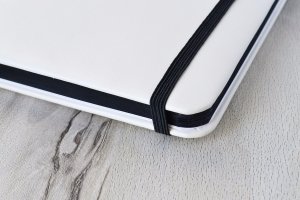What is UV-Vis spectroscopy PDF?
Ultraviolet- Visible Spectroscopy. Ultraviolet and visible (UV-Vis) absorption spectroscopy is the measurement of the. attenuation of a beam of light after it passes through a sample or after reflection from. a sample surface. The visible spectrum ranges from 400 nm to about 800 nm.
What is the principle of UV Visible Spectroscopy?
The Principle of UV-Visible Spectroscopy is based on the absorption of ultraviolet light or visible light by chemical compounds, which results in the production of distinct spectra. Spectroscopy is based on the interaction between light and matter.
How do you use UV spectroscopy?
Procedure
- Turn on the UV-Vis spectrometer and allow the lamps to warm up for an appropriate period of time (around 20 min) to stabilize them.
- Fill a cuvette with the solvent for the sample and make sure the outside is clean.
- Place the cuvette in the spectrometer.
- Take a reading for the blank.
What is UV-Vis spectroscopy?
UV-Vis Spectroscopy (or Spectrophotometry) is a quantitative technique used to measure how much a chemical substance absorbs light. This is done by measuring the intensity of light that passes through a sample with respect to the intensity of light through a reference sample or blank.
What is the difference between UV and visible spectroscopy?
There is no difference between UV and visible spectrophotometer because both these names are used for the same analytical instrument. This instrument uses the absorption spectroscopy technique in Ultraviolet and visible spectral region.
What is the application of UV VIS spectroscopy?
Ultraviolet-visible (UV-Vis) spectroscopy is a widely used technique in many areas of science ranging from bacterial culturing, drug identification and nucleic acid purity checks and quantitation, to quality control in the beverage industry and chemical research.
What is the range of UV Visible spectroscopy?
In UV/Vis/NIR spectroscopy the ultraviolet (170 nm to 380 nm), visible (380 nm to 780 nm), and near infrared (780 nm to 3300 nm) are used.
What is UV Vis range?
Often abbreviated to UV/Vis or UV-Vis. UV-Visible spectroscopy offers the maximum flexibility and is suitable for applications in the wavelength range 190 to 1100 nm. In UV/Visible spectroscopy the UV region is considered to be any wavelength less than 340 nm.
What is UV Vis spectrum?
Ultraviolet-visible (UV-Vis) spectrophotometry is a technique used to measure light absorbance across the ultraviolet and visible ranges of the electromagnetic spectrum. When incident light strikes matter it can either be absorbed, reflected, or transmitted.
How does UV Visible Spectrometer work?
UV-Vis spectroscopy works by passing light through a sample of your solution then determining how much light gets absorbed by the solution. Nuclear magnetic resonance can look at nuclei. It uses the magnetic properties of certain nuclei, the most common being 13C and 1H.
How does UV spectroscopy work?
Ultraviolet spectroscopy can measure absorbance and transmittance beyond the visible spectrum, in the ultraviolet range. A spectrophotometer works by directing a beam of light through a cuvette, or clear tube, that contains the sample solution.
